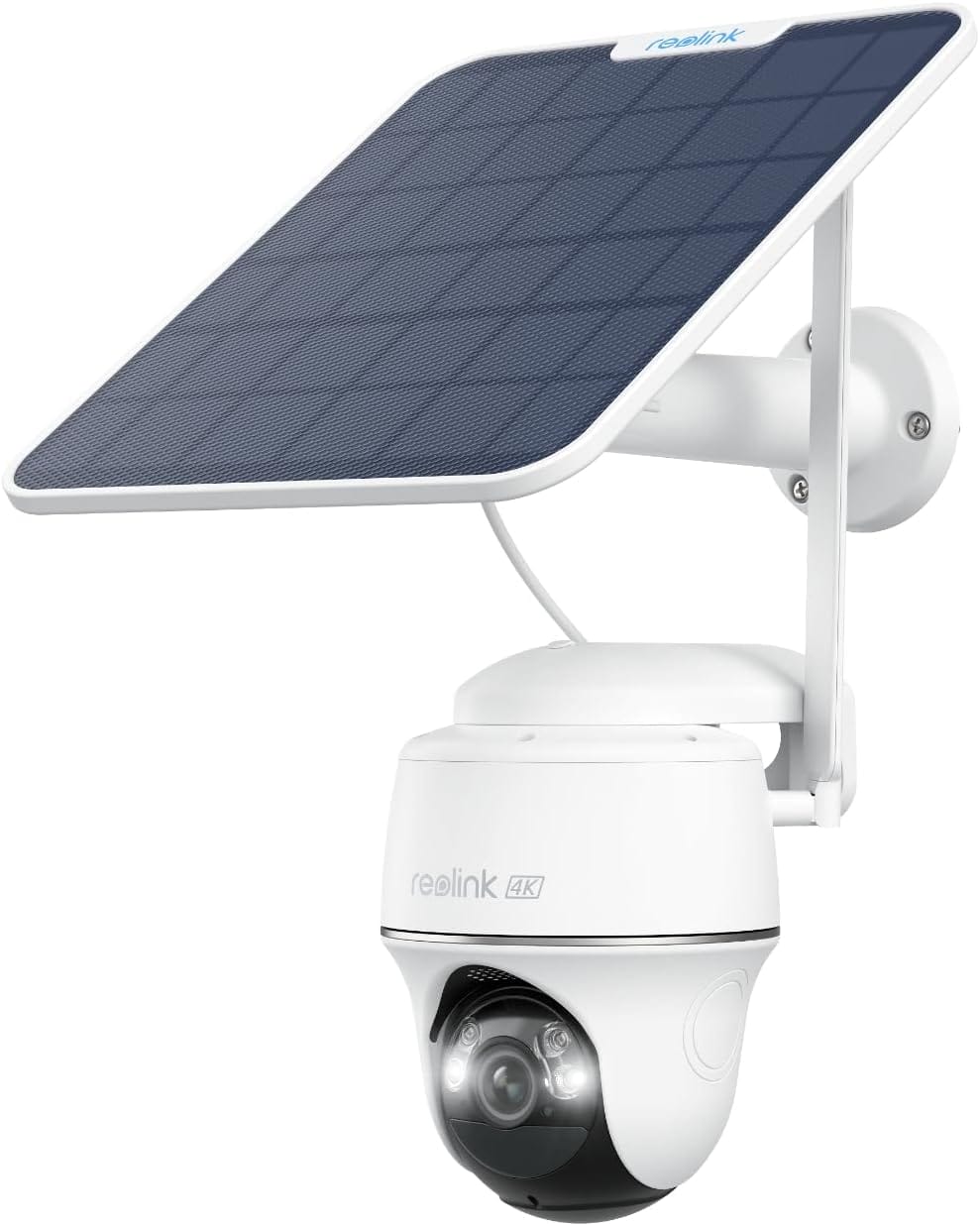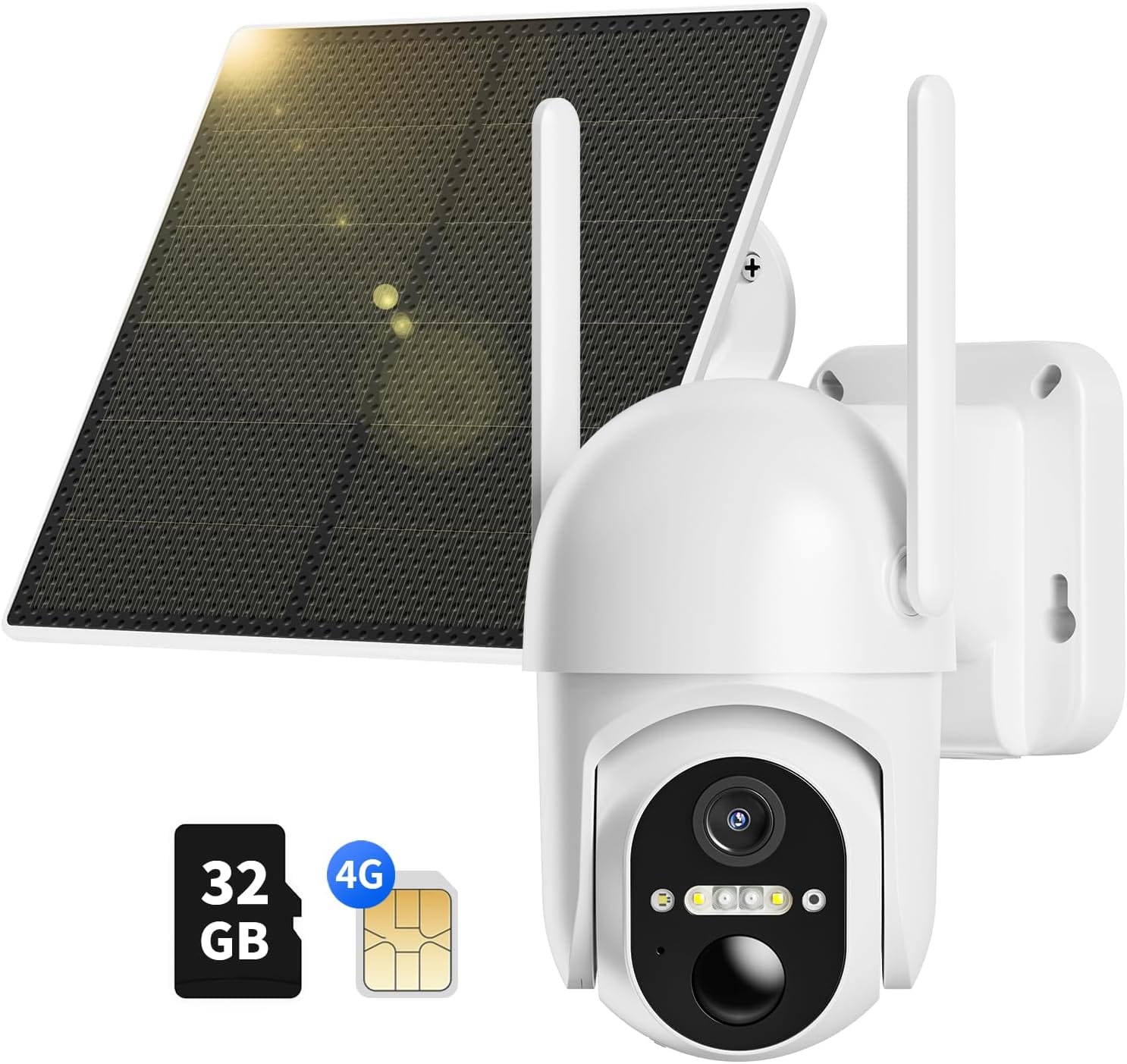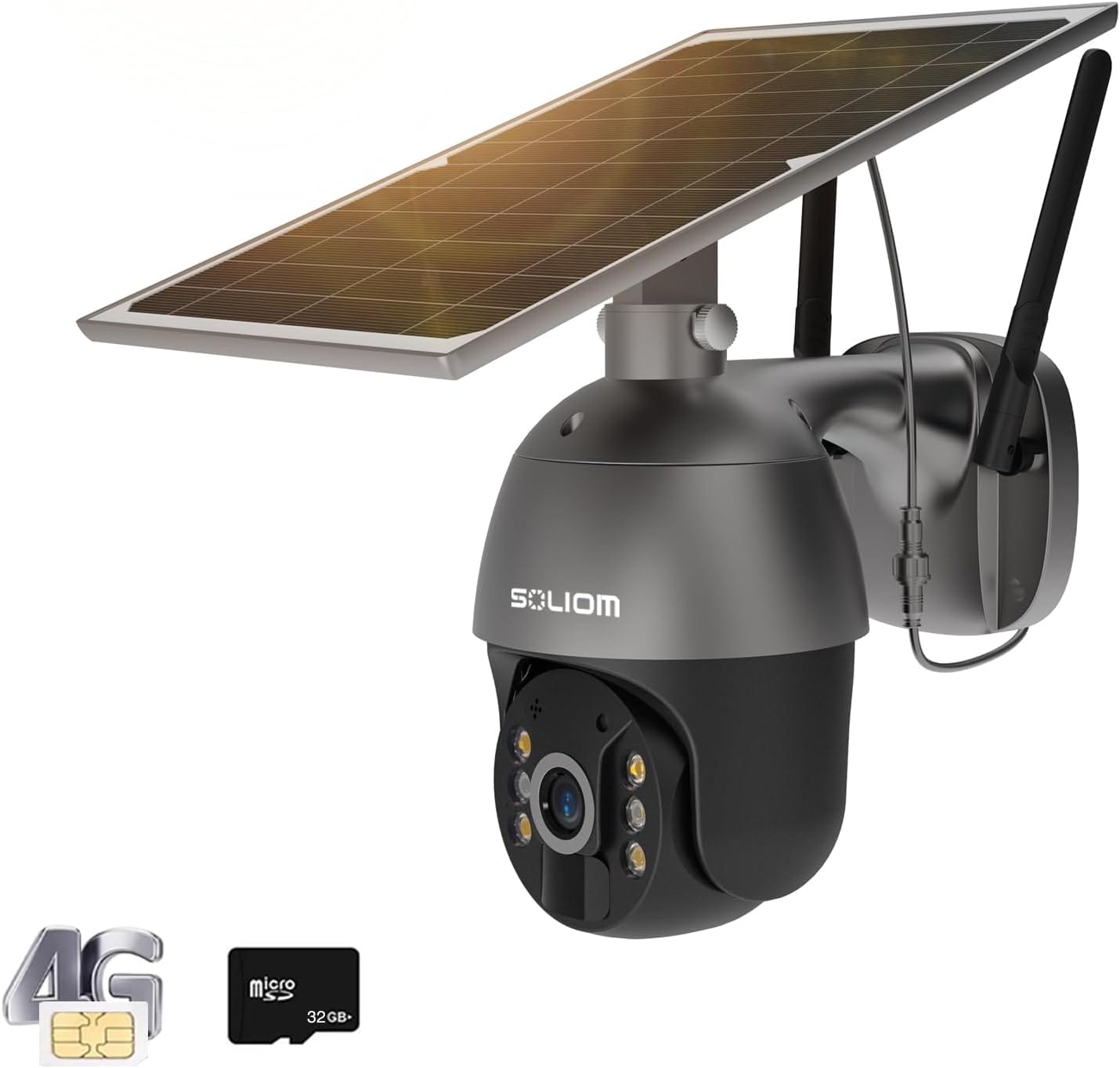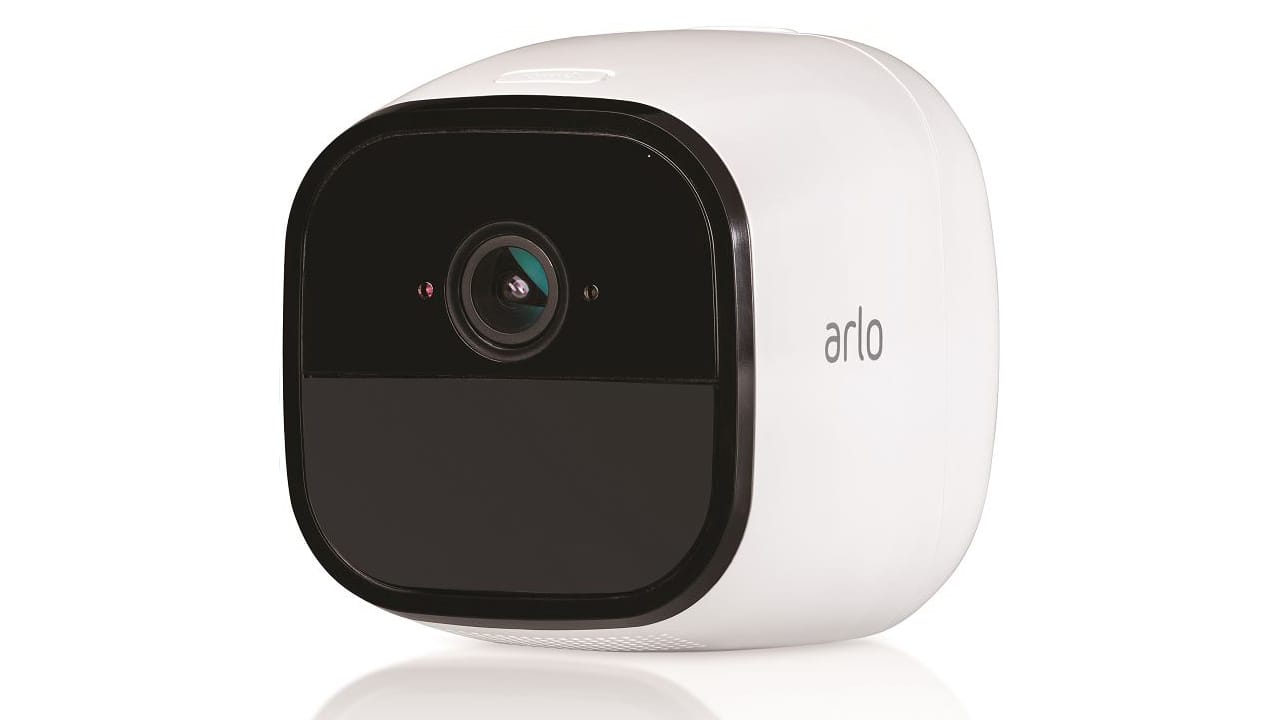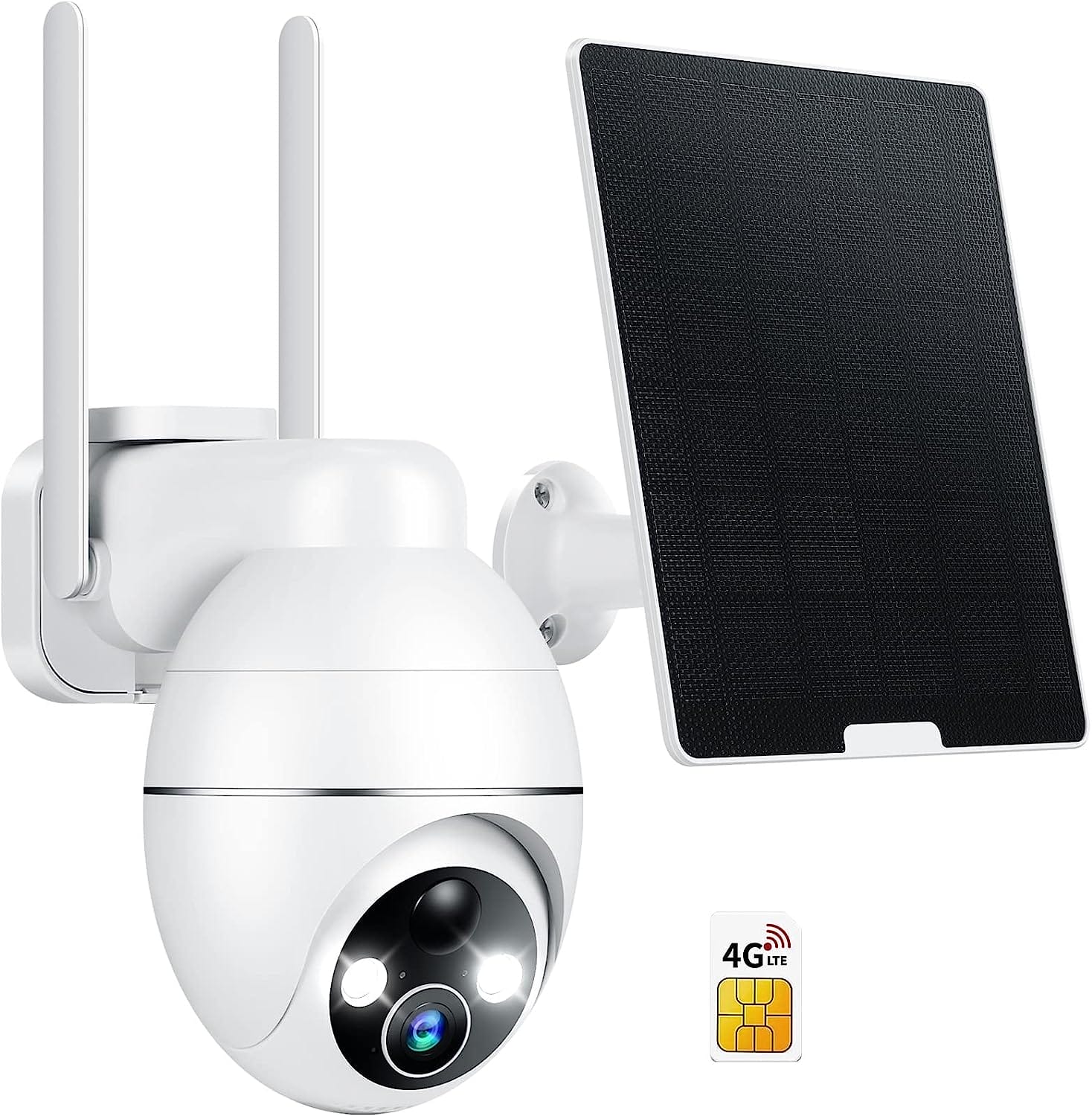Going out on vacation and don’t have anyone to look over your home? Have a remote cabin with no power source and no Wi-Fi? Working on a construction site and have to relocate the camera every few days? Then a cellular security system is just what you need, but what is a cellular security camera? A cellular security cameras allow you to monitor your valued places day and night as they do not require a Wi-Fi connection to transmit life feed to your phone. They are wireless, can be relocated easily, and some are solar-powered too. After performing vigorous checks and testing them, you cannot go wrong with Reolink Go PT Ultra + Solar Panel. If you are considering beefing up security, but cannot figure out where to start then we provide you a convenient list of best security cameras and also,
- A quick summary of the best cameras for every budget and requirement
- A detailed assessment of our top 5 picks for cellular security cameras
- Extremely informative buying guide
Quick Summary: Top 5 Best Cellular Security Camera 4G LTE
Our professional editors pick and rate these products specifically for each category and recommend the best product we can.
Best Overall: Reolink Go PT Ultra + Solar Panel This affordable, durable, and highly-rated cellular security camera is loaded with features. We think it is the best cellular security camera with a rechargeable battery.
Runner-Up: Ebitcam 4G LTE Security Camera Looking for a cheaper, reliable device, then you’ve got yourself a winner.
Popular Choice: SOLIOM S600 3G/4G LTE Camera Best option for harsher climates, gives quick alerts, and has a live streaming option.
Best Multi-function: Arlo Go Mobile HD Security Camera It is costly and highly motion sensitive but ideal for those who prefer linking their devices to Alexa.
Best Affordability: Recacam 4G LTE Clear day and night vision at affordable rates makes it a great option.
Top 3 Quick Comparison
| Product | Weatherproof | Connections | Resolution | Zoom |
|---|---|---|---|---|
| 1. Reolink Go PT Ultra + Solar Panel Best Overall |
IP 65 |
3G, 4G LTE | 4k | 16x |
| 2. Ebitcam 4G LTE Security Camera Runner-Up |
IP 65 |
4G LTE | 2k | 4x |
| 3. Soliom S600 4G camera Popular Choice |
IP 66 |
4G LTE | 1080p | 3x |
Our Reviews
1. Reolink Go PT Ultra + Solar Panel
Best Overall
Quick Specs
- Connections: 3G, 4G LTE
- Carriers: T- Mobile, Verizon, AT&T, EIOT Club, Freedompop, Mint
- Power: Battery, Power cable, Solar panel
- Night Vision: 33 ft
- Motion Detection: Clips, Phone Alerts, Email Alerts, Sensitivity
- Water Resistant: IP 65
- Storage: SD Card (up to 128 GB), Cloud (7-day rolling free video history)
- Audio: Two way
Given the limited options, this cellular security camera is the best one on the market. It is battery powered and has a strong solar panel making it 100% wire-free, enabling it can be mounted anywhere.
Loaded with features, it runs on 3G, 4G, and 5G cellular network. The smart camera with advanced detection technologies can analyze the person, vehicle, and pet shapes, and enables you to customize the motion zone to focus on the areas that matter to you. And you’ll get instant and accurate alerts when motion is detected. You can even talk to the person on the other side of the camera, with its two-way audio. This comes handy when there’s a delivery boy or family there. You can even use it to warn the burglars that they are being watched.
The camera starts recording at the slightest motion and stores the whole thing on the cloud, which is available free for seven days. In case you a memory card in place, you can keep the feed forever. The lack of wires makes it very hard for intruders to stop the camera from recording, and hence providing optimum security. It is waterproof and can resist heat and snow.
With just a sim card, memory card, and battery to install and a QR Code to scan, it is reasonably easy to set-up. It is light, portable, and can easily be shifted from one location to another. It has a stunning 4k 8MP ultra high definition quality, 33 feet visibility, wide-angle view, and grid view. It is even equipped with starlight night vision, which allows you to see even in total darkness and gives you enhanced clarity.
What We Liked
- Easy to use App
- Best picture quality
- Best zoom capability
What We Didn’t Like
- Motion connectivity
- Sim and data pack need to be bought separately
Product Reviews: “Amazing camera! Easy to set up. Easy to modify the settings via the app. The microphone is exceptional, I can hear things on the app like if I were standing where the camera was mounted. The 4k is crystal clear! ”
2. Ebitcam 4G LTE Security Camera
Runner-Up
Quick Specs
- Connections: 4G LTE
- Carriers: Verizon, AT&T, T-Mobile
- Power: Battery, Power cable, Solar panel
- Night Vision: Not Disclosed
- Motion Detection: Yes
- Waterproof: Yes
- Storage: SD Card
- Video Control: None
- Audio: Two Way
Ebitcam 4G LTE Security Camera is one of the top reviewed cellular security cameras on the list. It is IP 65 certified weather-resistant and is even resistant to water sprayed directly from a nozzle. It is capable of operating in a temperature range of -40℉ to 104℉ and is well-built and pretty durable.
Setting up this device requires installing a pre-activated SIM card, SD card, and the mounting bracket which taking 15-20 minutes. Ebitcam security camera is equipped with a 10400mAh rechargeable battery and 5W solar panel, so you don’t need to worry about it running out of power. With only 3 hours of direct sunlight, the solar panel can provide enough power to last a whole day. It provides a 24/7 photo coverage via a 4G cellular network. It sends alerts on the mobile phone only when there’s an actual intruder.
This cellular security camera records full HD 2k live videos and stores them in the SD card and even comes with a spotlight for greater visibility. There is no need to get your hands on the SD card to review the tapes since you can remotely access your camera through your mobile device to see footage in real time.
What We Liked
- Affordable
- Easy to install
What We Didn’t Like
- Fully Motion detection capabilities
- Doesn’t have the highest quality picture
Product Reviews: “I love this camera and phone app!! I use it as my primary driveway camera system. It never fails to alert me of visitors when I am at home or away. I will be buying another one for my other home.”
3. SOLIOM S600 3G/4G LTE Cellular Security Camera
Best Popular Choice
Quick Specs
- Connections: 4G LTE
- Carriers: Use provided carrier or use Verizon, AT&T, T-Mobile SIM Card
- Power: Battery, Solar Panels (built-in)
- Night Vision: 32 ft
- Motion Detection: Clips, Phone Alerts. Email Alerts, Sensitivity
- Water Resistant: IP 65
- Storage: SD Card
- Audio: Two Way
Soliom S600 4G camera is a robust cellular camera, generally used for rough locations like for hunting or a cabin. But it works perfectly fine for home security purposes as well. This camera features a full HD night vision with 2 built-in infrared LED giving you a 32 feet range. It shoots 1080p videos that can be shared with up to 10 family members at the same time. The built-in advanced PIR movement sensor will detect any motion in the area sensitively and send an instant alert to your phone.
The package includes a free 32 GB memory card and a free Sim card that allows 500 free photographs. The camera features a wide dynamic lens that has an impressive 110° PIR angle. With its quick 0.35 second trigger, you get lightning-fast, 1 to 5 photos or a video. You can watch live feed through your phone over the cellular network. This ensures the stealth security of your homes.
This rugged camera is both water and snow proofed, making it ideal for outdoor use. The camera prevents water from seeping into the camera and withstand the temperature range from -20°C to 60°C
What We Liked
- Motion Detection
- Weatherproof
- Great night vision
What We Didn’t Like
- Picture quality
- Battery
Product Reviews: “Looked at a lot of cameras, easy to set up, liked the solar charging, has clear vision, lights are bright, the recording is clear, can scan in different directions, I like that you don’t have to have a subscription.”
4. Arlo Go Mobile HD Security Camera
Best Multi-functional
Quick Specs
- Connections: 3G, 4G
- Carriers: Not compatible with Verizon or AT&T
- Power: Battery, Power cable
- Night Vision: 25 ft
- Motion Detection: Clips, Phone Alerts. Email Alerts, Sensitivity
- Water Resistant: Yes, but not specified
- Storage: SD Card, Cloud
- Video Control: Alexa
- Audio: 2 way
Arlo Go works on 3G and 4G cellular service and comes with a data plan. This wire-free camera is suitable for outdoor as well as indoor use. The feature that makes it unique is that it works on Amazon Alexa’s voice control.
The cellular security camera comes with an in-built SD card slot where you can store the videos in case of internet interruption. You can also save the recordings on cloud storage. The app provides three video qualities that can be set depending upon different recording times. For example, you can use high-quality images at night and low ones in the morning and evening hours. This not only helps you save data plan but also preserves memory. This cellular security camera features a two-way talk that enables you to talk to the person near the camera. It may be a delivery boy, family member, or even a burglar, whom you can warn off. The automatic motion sensor lights a notification on your phone, and you stream the live video immediately.
This security camera operates on a 3660mAh, rechargeable battery that is capable of powering your camera for a short time. It has 850 nm LEDs that illuminate up to 25 feet at night, hence enabling you to get an enhanced vision even in the dark.
What We Liked
- Works with Alexa
- Two-way audio
- Free cloud recordings- 7-day free recordings
What We Didn’t Like
- Expensive cloud plan
- Limited battery
- Limited night vision range
Product Reviews: “Go Mobile, expensive, but a worthwhile upgrade.”
5. Recacam 4G LTE
Best Affordability
Quick Specs
- Connections: 4G
- Carriers: Use carrier of included SIM Card
- Power: Solar, Battery
- Night Vision: Yes
- Motion Detection: Yes
- Water Resistant: 1P 66
- Storage: SD Card (not included)
- Audio: 2 way
Recacam 4G LTE is a great value for the price and has great overall construction. This 4G enabled security camera is easy to set up and and use, which makes it the ideal system for outdoors.
It allows to get video signals in real-time and sound and will send you a notification as soon as it detects a moving object. Enabled with a wide-angle at 355-degree, it can easily cover the majority of a large area. It is highly motion-sensitive and sends alerts to your phone when it detects something out of ordinary.
The deal is made sweeter by 100MB of free storage and the flexibility of adding more via a memory card that is not included. Its night-vision has been complimented time and again. There are three-night vision modes: Auto, Colored and IR night vision, which can be seen up to 33 feet. The camera also has excellent weatherproof performance of IP66 and can withstand the temperature range of -20°C to 50°C
Another point worth mentioning is the company’s tech support. In case of any complaints, the executive will get back to you within 24 hours to sort out the issue.
What We Liked
- Great 2k video resolution for price
- Motion Detection sensitivity is a bonus
What We Didn’t Like
- Can’t pick your networks
- SD card is not included
Product Reviews: “This is great for the price and the quality you really can’t go wrong. The picture is clear and it is a breeze to set up and doesn’t require any fancy knowledge or skill. It is made well and easy to use.”
Features To Look Out For
Now before you make your final choice, there are a few features you must know in detail about. These will not assist in you getting the best cellular security camera, but also give you a better understanding of how this product works. So, let’s get started!
Motion Sensing
The traditional cameras that run on Wi-Fi, work with CVR (Continuous Video Recording). This feature allows the camera to record 24/7. However, cellular security cameras work with motion-sensing technology. The AI-equipped device spends most of its time on standby, and whenever it detects any motion, it comes to life, captures photographs, and records a short clip. (1)
Motion Detection
The most raved feature of cellular security cameras is the AI-powered motion detector. The camera stays in standby mode most of the time. As soon as it detects any movement, it clicks a series of photos, records a video, and alerts the owner. The owner can either get notified by the notification via the app or by the images and videos sent on the mail or by MMS. (2)A sensor called Passive infrared (PIR) is used to detect these movements. It sees the body heat emitted by humans and animals and sends a motion alert. Since some places are far busier and have various types of needless motions like falling of a leaf, you can adjust the sensitivity level of your PIR sensor. The more sensitive it is, the more alerts you’ll get. (3)
Night Vision
Night Vision is one of the essential features. It is the ability of the camera to record clear images, even in the dark. The PIR sensor plays an important role here too. It has an infrared LED light that emits a beam of infrared energy. This energy, when combined with the heat or infrared energy of an animal or human body, gets magnified and is easier to detect. Hence, creating a clearer image.Now, the number of these LED lights determine the quality of images captured at night. The more the number of lights, the better the image.
Storage
You cannot keep an eye on the security system 24/7. You need storage to monitor the footage later on. The recordings can either be stored on the cloud or in a memory card installed in the device. Most cellular security cameras have slots for SD cards, and the ideal capacity is 64GB. The more, the better. Make sure that you don’t run out of memory, or the camera will stop recording.
Power
In remote locations, where there are no Wi-Fi connections, the chances of having a power supply are also low. Since these security cameras are also built to operate in such places, they have to be powered by a battery. This is another reason why these cameras do not run on CVR. Running consistently will drain the battery quickly. Usage of a solar panel ensures longer running batteries and clean, efficient energy. One of the listed cellular security cameras has an in-built solar panel. At the same time, for some of them, you buy them additionally. Some of them also have built-in rechargeable batteries. Understand which option works best for you and opt for that one.
Weather Resistant
Since these cameras are also meant for outdoor usage, they are all weatherproof. It is a measure by something called IP rating. It is a two-digit number. The first one varies from a scale of 0-6 and tells how much a device is protected against dust. The second number measures the protection of the device against water or moisture on a scale of 0 to 9. Most of the security cameras have an IP 65 rating that provides sufficient weather protection.
Verdict
Whether you want to keep an eye on your campsite or want to install a security system for your RV or trailer, these are the best options you have. We recommend Reolink Go PT Ultra + Solar Panel because of its wholesome features and affordability. However, your personal preference may vary according to the budget and requirements. You may also check other review guides we’ve made for other cameras such as; best endoscope camera, best body camera, best mini camera. For the camera instruction article, you may also click here. We hope these guides will help you in the future.
Our Top Pick is the Reolink GO PT Ultra. This affordable, durable, and highly-rated cellular security camera is loaded with features. We think it is the best cellular security camera with a rechargeable battery.
References
(1) AI – https://www.zdnet.com/article/what-is-ai-everything-you-need-to-know-about-artificial-intelligence/
(2) MMS – https://searchmobilecomputing.techtarget.com/definition/Multimedia-Messaging-Service
(3) PIR – https://learn.adafruit.com/pir-passive-infrared-proximity-motion-sensor/how-pirs-work


